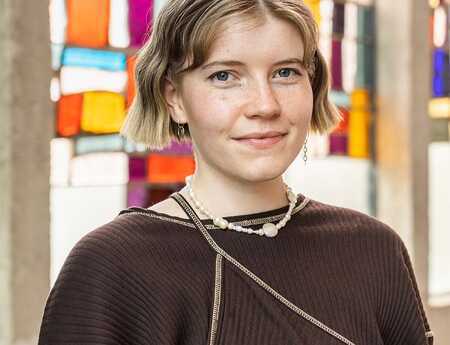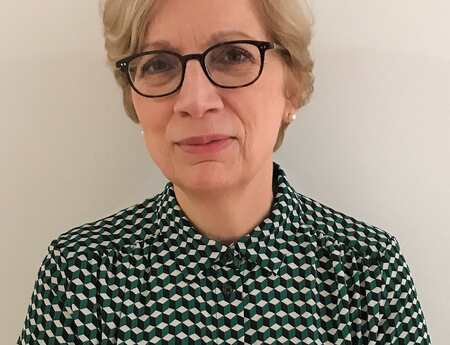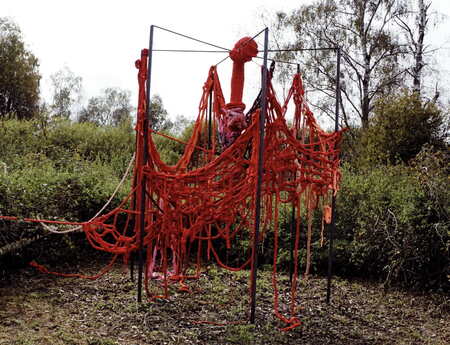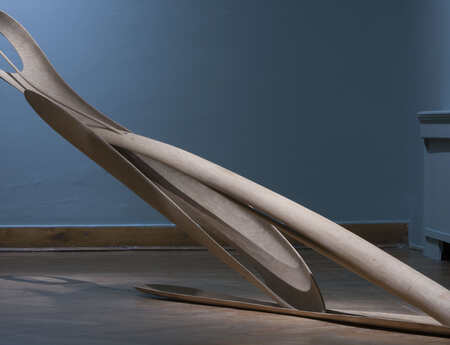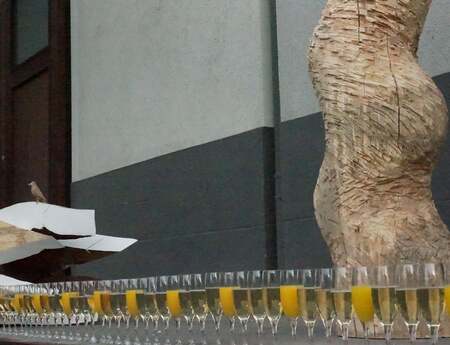Underwater Haze with Trevor Yeung
Trevor Yeung is an interdisciplinary artist who creates living systems that often house animals and plants in order to address the process of human relation. His current solo exhibition, Underwater Haze at Kestner Gesellschaft in Hanover is the largest presentation of his work in Europe to date. We sat down to chat with him about his practice and the process of collaboration with living systems.
When did you first start working with living and organic materials such as water and plants?
I first started using plants and living systems in my practice in university as an arts student at the Academy of Visual Arts at Hong Kong Baptist University. The art school I went to in Hong Kong did not teach discipline specific degrees, so my practice was very interdisciplinary from early on. As an artist I see myself as greedy for more materials and I think that this really opens up the possibility of using any material that I want. And with plants, aquariums and fish, I have kept them as a hobby for a long time, long before I wanted to be an artist. Because of that I already had a lot of knowledge of how these systems operate.
This is very much informed by my experience of growing up in Hong Kong. Everyone is living in small apartments so in order to have a connection with nature or to have a garden you need to build these systems to support it.
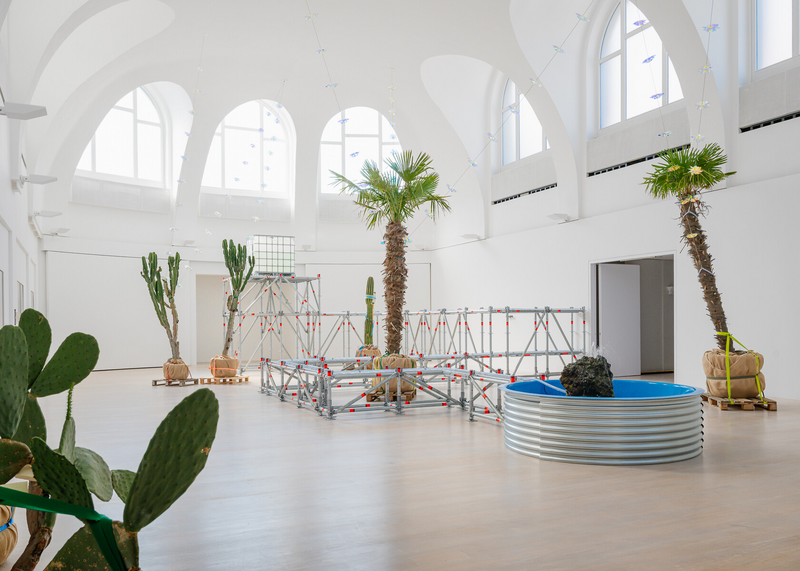
Why do you choose to use technical systems (tubes, water storage tanks, cultivation devices, scaffolding) as a metaphor for care and social connection in your work?
Personally, I am fascinated about understanding how systems that house living things such as plants or animals work. I think that to have pets you are performing an act of care, and it is a gratifying feeling. But at the same time, there is also a loss of control for unknown factors to impact the plant or the animal and that can be a positive thing because the subject then has the control. Rather than looking at it as a manipulation of an environment I see it as an act of care and this idea has really informed my aesthetic and style as an artist.
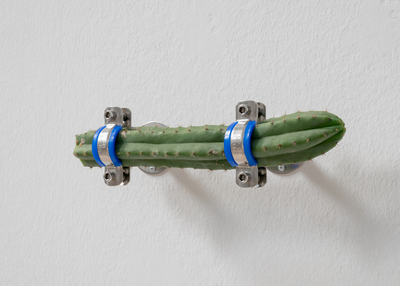
When I choose a subject to make a project in art, I have to really understand how that system of that particular subject works. With plants, I usually grow them first to understand what they need to grow and survive. I need to feel close to the subject in order to confidently use it in my work.
I always use practical, industrial, ready-made materials in my work as a way of drawing people's attention to the systems present in the artwork. If I make something that is aesthetically beautiful in the beginning, people will lose the intention of the work. But when you use the right material, which is ready made, you don't only see the support, but you see how the material is working with the plants. I also like to use industrial ready-made materials as they can just be re-used or returned back to the gallery. I’m very interested in using materials that are already present in the area.
Your work always responds to the site-specific conditions of the exhibition space and the city it's in. How did this exhibition develop?
Yeah, I think this exhibition at Kestner Gesellschaft is a really good example of how I consider space in relation to my work. When I first got the invitation from Alexander Wilmschen, the curator, I began researching the city because I had never been to Hannover.
I was so amazed by the exhibition space and the history of the building. It was originally a public swimming pool, so the building has these big windows with lots of light coming through and I immediately thought it looked like a greenhouse. When I saw that I knew I would be able to work with lots of different plants.
As part of your research in Hannover you also visited the Herrenhäuser Botanical Gardens in Hannover. How did this inform the work?
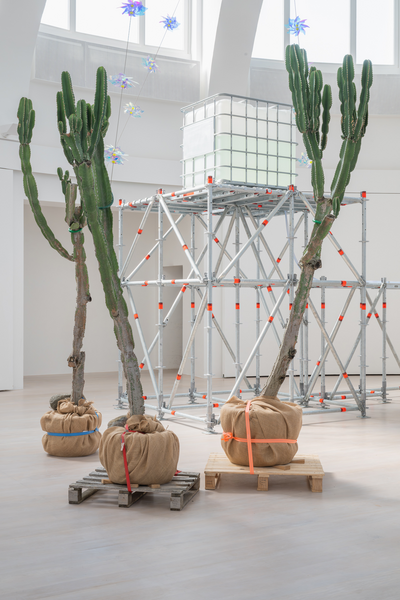
Yes, whenever I travel, I always go to Botanical gardens and see how they are managed. I am always drawn to plants that are overgrown in greenhouses and the ways we then support them. This touches on the heart of the exhibition.
In my practice I’m looking at how we, as a society, deal with things that are already saturated. The whole exhibition is really about when something is already saturated how can we handle that saturation. I'm really interested in investigating that very delicate moment of how to create a new sense of balance or let it oversaturate.
You think about a tree that is too long, you can either let it fall or put in some supports. So in a way that is the tension that I really want to focus on with this exhibition. This is visible with the cacti in the Herrenhäuser Gärten that are held up by supports in the greenhouse. I then replicated this in Underwater Haze.
The exhibition is broken up into three different ‘zones’. Why did you choose to break it up in this way?
Well, the exhibition is broken up into three different rooms and I was thinking about how I can connect these rooms. I wanted the audience to walk through each room multiple times so there are water pipes connecting two of the rooms, so you end up following it from one room to another and then back again. In this way it builds up an active space.
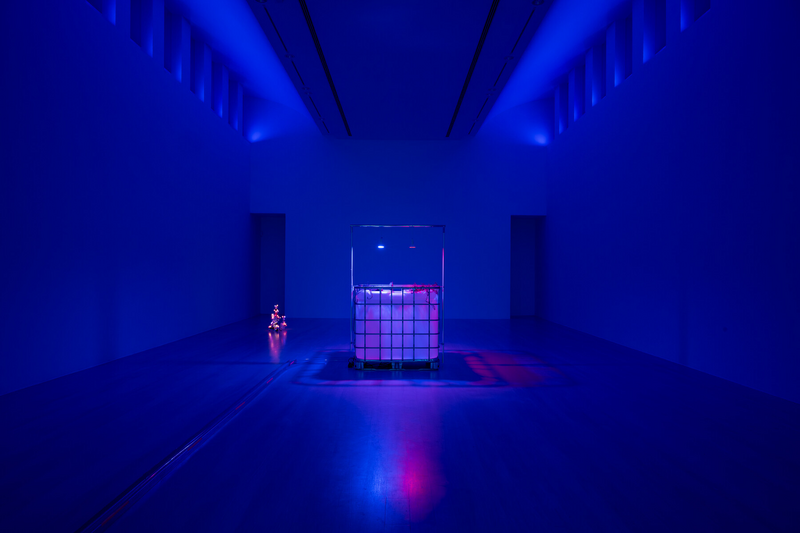
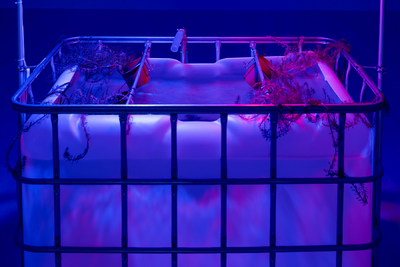
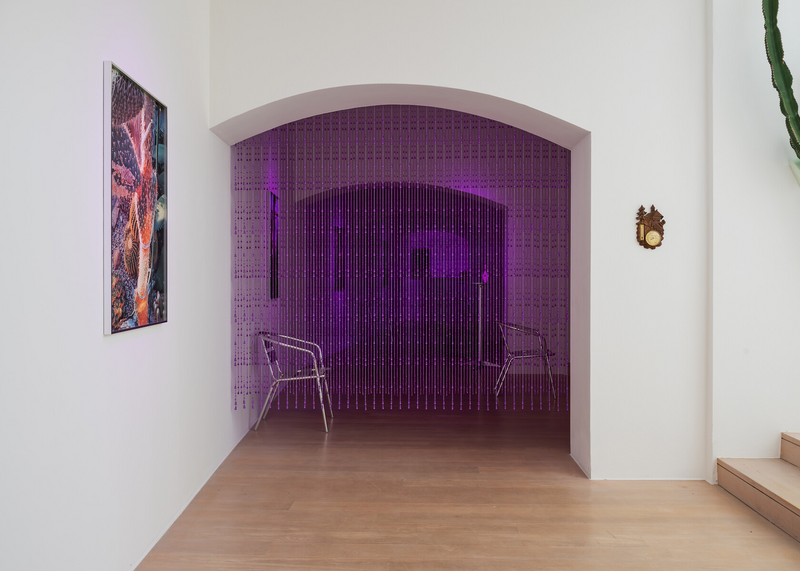
How do you think the exhibition will change over time?
The most obvious is that the moss in the fountain will continue to grow. The water lily in the blue room will also change. They prefer warmer temperatures and it's getting colder in Hannover so I think that will change as well.
I don't expect the cacti or the palms to change because they are 60 to 70 years old. We were so lucky to borrow these really beautiful cacti. I wish I could keep them. This is also important to the exhibition because these cacti have been alive for 70 years and this exhibition only represents about 3 months of their life. When you think about that amount of time, the exhibition may not be that important to the lifespan of the cacti.
So, in a way that the whole experience of the exhibition is just like a life cycle. One of the nice things about making exhibitions in this way is that they change throughout time and then they go on to live another life after.
Trevor Yeung’s solo exhibition Underwater Haze is currently on view at Kestner Gesellschaft in Hanover until 16 November 2025. He has another forthcoming exhibition, Redundant Lovers on view at Galerie Allen in Paris from 18 October - 22 November 2025.

